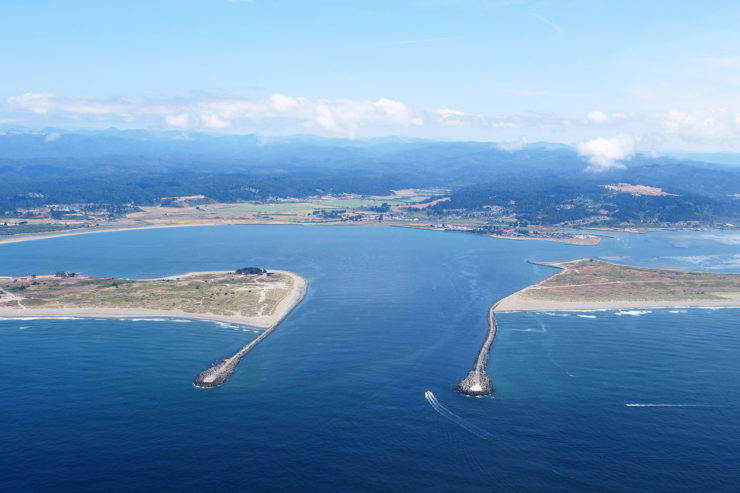Please join us for a five-part webinar series on Exploring the Feasibility of Offshore Wind Energy for the California North Coast. This online series will open on September 14 and run for five consecutive Mondays through October 12. Webinars will begin at 2 pm (Pacific), and will be live streamed and captioned. All events are free and open to the public.
Each week’s webinar will present key findings from offshore wind energy feasibility studies conducted by the Schatz Center’s offshore wind studies team and research partners over the last 18 months. Presentations will be followed by commentary from north coast community leaders and subject area experts — and then by a community discussion in which all attendees are encouraged to share questions and reflections. Leaders from state and federal government will also offer insight during each event.
Schedule of events:
- Monday, September 14: Energy Production and Delivery, and Economic Development
- Monday, September 21: Ecological and Geological Environment
- Monday, September 28: Port and Coastal Infrastructure
- Monday, October 5: Community Perspectives on Regional Impacts and Opportunities
- Monday, October 12: Reflections and Next Steps
Registration
Registration for all events is now open at schatzcenter.org/wind.
For more information or to sign up for research updates from our ongoing wind studies, contact windstudies@schatzcenter.org.
Background
Starting about 20 miles from shore, the north coast of California has the strongest wind resource in the continental United States. Offshore wind development in this region could contribute significantly to California’s climate and clean energy goals while also supporting economic and job development on the north coast. At the same time, issues including environmental impacts, geologic hazards, economic viability, infrastructure needs, and cultural and community resources and existing activities must be carefully examined and collaboratively addressed if this renewable energy opportunity is to be realized.
Funding
Production of this five-part webinar series is supported by the Ocean Protection Council of the California Natural Resources Agency. The research studies were funded by the Ocean Protection Council, the California Governor’s Office of Planning and Research, and the Federal Bureau of Ocean Energy Management.














